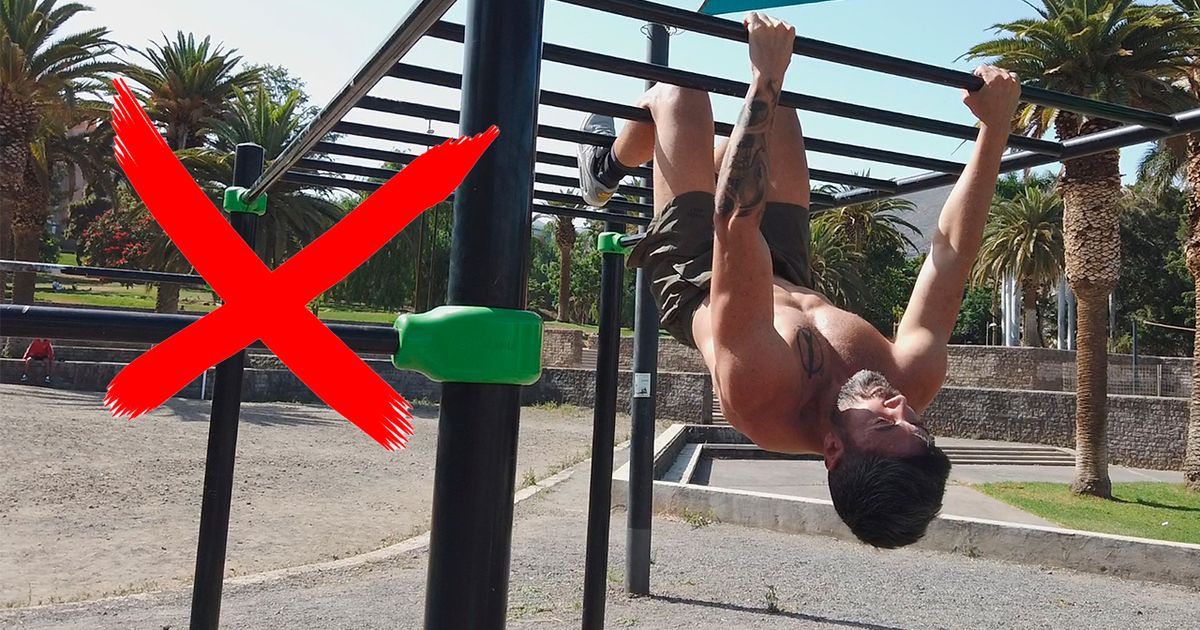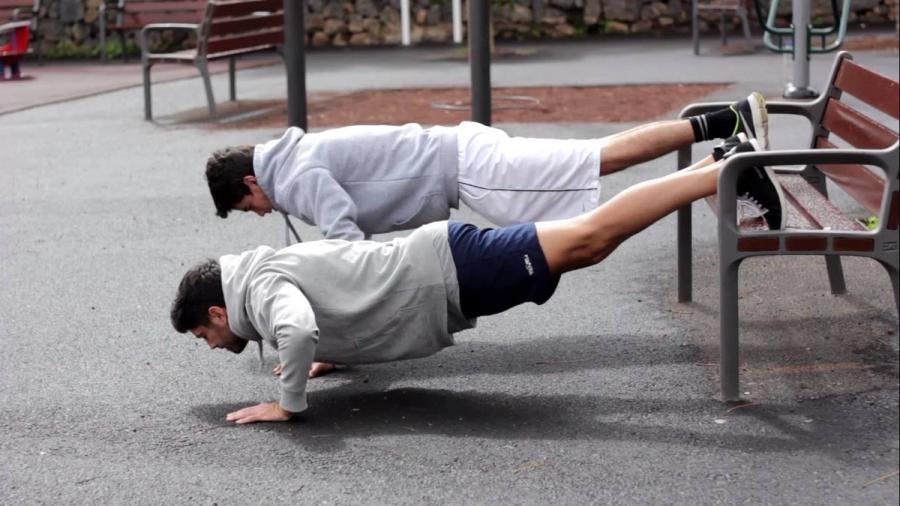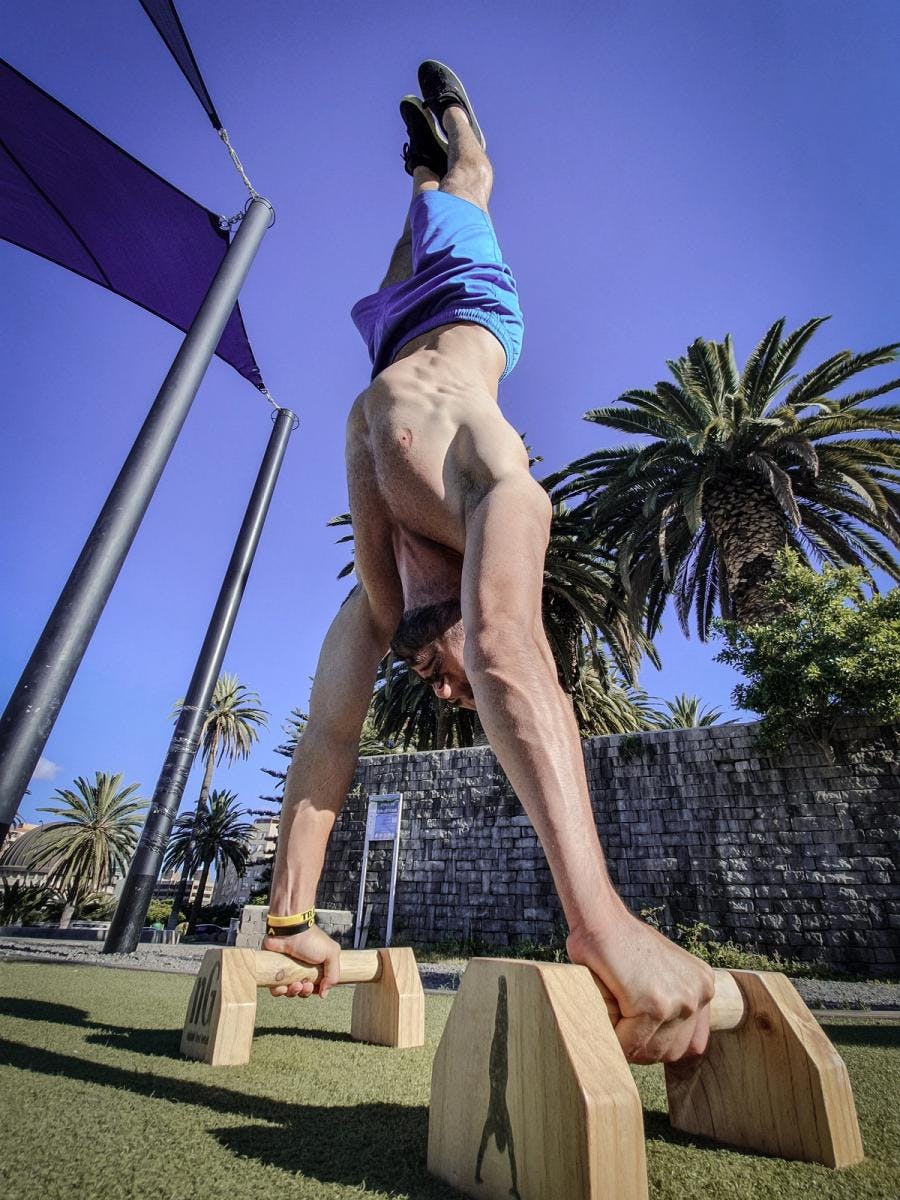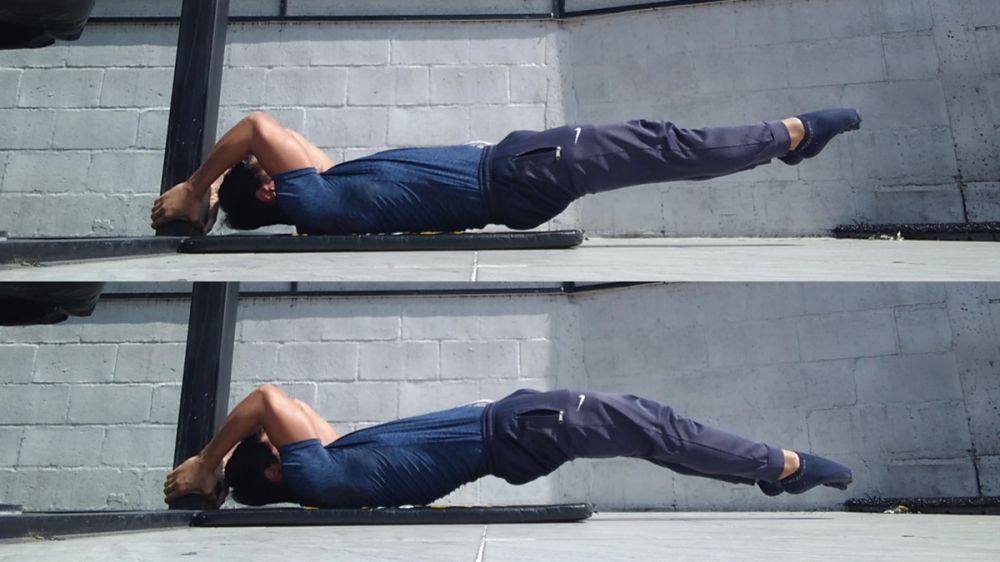
Macronutrients: What They Are, Types, and How They Influence Athletic Performance
Learn all about macronutrients: their roles, types, and the importance of nutrient timing for sports performance. Read our complete guide for athletes.

When we train calisthenics there are times when we take some concepts for granted, or have some wrong beliefs, or maybe we don't realize some details that could possibly be holding back our progress. In this article we will see some of the most frequent.
1. Using useless exercises
In calisthenics we have a practically infinite variety of exercises, and we can also use our creativity to add variants or "extras" that occur to us.
But you have to be careful because sometimes those exercises are not giving us what we are really looking for.
Especially this happens a lot with exercises that look impressive or flashy, but that really don't add much. Or exercises that you perform hanging or positioned on the bars in an almost acrobatic way when you could really do the normal "non-acrobatic" variant of it and it would be just as useful.
It also happens with people who use elastic bands to work in a way that they really could do with basic exercises.
When you include an exercise in your routine, check that it really is an exercise that works the muscles or skills you are looking for, check that you are not complicating the execution and that there are no simpler exercises to perform that are more effective.

2. Not being consistent
There are people who need everything to be perfectly in place in order to train, and as soon as there is something that does not fit well, they use it as an excuse not to train.
For example, there are people who train during spring and summer and then when it's cold they stop. People who train in times when they have a lot of free time but when their schedules get a little complicated they stop. People who as soon as they feel some discomfort in some area of the body stop training completely... etc.
With this predisposition to stop training so easily, it is difficult to obtain results, because those long breaks make you lose your progress. If you really want your training to be effective, you have to find a way to continue training consistently, adapting to different circumstances.

If it's cold, train warmer, train at noon, or train indoors. If you have tighter schedules or you have to study a lot, do shorter workouts. If you have wrist or shoulder discomfort, focus on training your legs until you recover. If you have a sore knee or ankle, focus on training your upper body until you recover.
As you can see, the key is to achieve consistency in the long term and avoid those periods of wasted time, to ensure that the results will be there no matter what.
3. Failing to do progressive overload
In contrast to the previous point, there are people who are constant for a long time, but still do not have good results, because they settle into practically fixed routines and forget to apply progressive overload.
Progressive overload consists of increasing the intensity of an exercise, set of reps, routine or training as the body adapts to it. It can consist of increasing repetitions, increasing sets, increasing added weight, reducing rest periods, increasing the difficulty of the exercise, or combinations of several of those parameters.
Therefore, if a person does not apply progressive overload, what will happen is that his body will adapt to the routine, and at that point there will be stagnation.
My advice is to keep a record of your workouts, be it a notepad, an excel file on your computer, a notebook or any method that is comfortable for you and check that over the weeks, months and years your routines become more and more intense, so that you can make sure that your body receives the stimulus it needs to continue progressing.

This topic can become much more complex with the use of programming with mesocycles, macrocycles, deloads and so on, but we will leave that for another article in which we will analyze it in depth. On a general level, as long as you make sure that over time you increase the intensity, it will be more than enough so that you do not waste time with your training.
4. Not listening to your body
Sometimes we "motivate" ourselves more than necessary and we want to progress as quickly as possible, demanding our body to reach limits for which it is not prepared.
In the previous point we mentioned that you have to progress and increase the intensity, but it has to be in a moderate way, we cannot try to make very large level jumps in a short time. Sometimes, especially when our routine is really adjusted to our level, it may be enough to increase one or two repetitions in one of the exercises so that the training is intense for us and we keep moving forward.
Our muscles and, above all, our connective tissue, need time to adapt. One of the most common cases in which we force more than necessary is when we learn a new movement, such as the muscle up. We are so excited about our new skill that we want to do it every day and in large numbers, which is a mistake and can lead to injury. Our muscles and our connective tissue are not adapted to this new movement, so we must give them time to assimilate it and not make excessive attempts or excessive repetitions.

The same goes for rest days. If you have been training for several days in a row and your body is asking you to rest, do it. If you have been training consistently for several weeks or months and your body is asking you for several days of rest, do it.
5. Not being clear about your goals
Another of the mistakes that you can regret over time is not knowing very well what you want to achieve with your training. Many people train with a rather vague goal like: "I want to be in shape" or they go from one thing to another in their training, one day they train front lever, another day they train hypertrophy, another day they train freestyle tricks, another day they do strength exercises and so on.
For both beginners and people who train casually, this somewhat loose approach is acceptable, but for people who want to get good results it is necessary that they have better defined goals and that they are clear about how they have to distribute their training and their routines in a manner consistent with those objectives.

If you don't know how to distribute your workouts, remember that in the pro version of Calisteniapp you have training programs of all kinds, which specify what to train each day to achieve each of the objectives.
Join our newsletter
Learn everything you need to know about calisthenics

Learn all about macronutrients: their roles, types, and the importance of nutrient timing for sports performance. Read our complete guide for athletes.

Not sure what to eat before training calisthenics? In this article, we explain the ideal pre-workout nutrition based on your specific type of training session.

If you want to know everything about how to make dragon flags, here's a complete guide geared towards real progressions.
